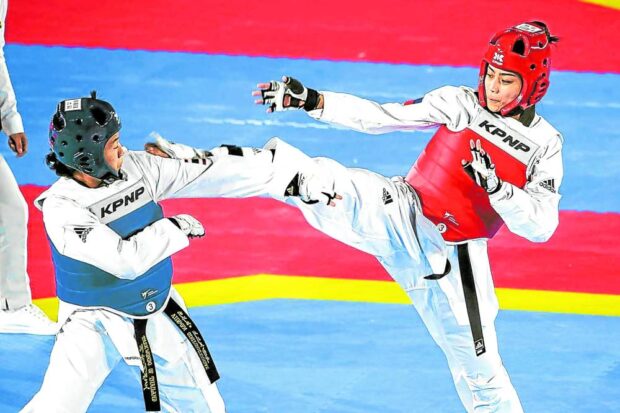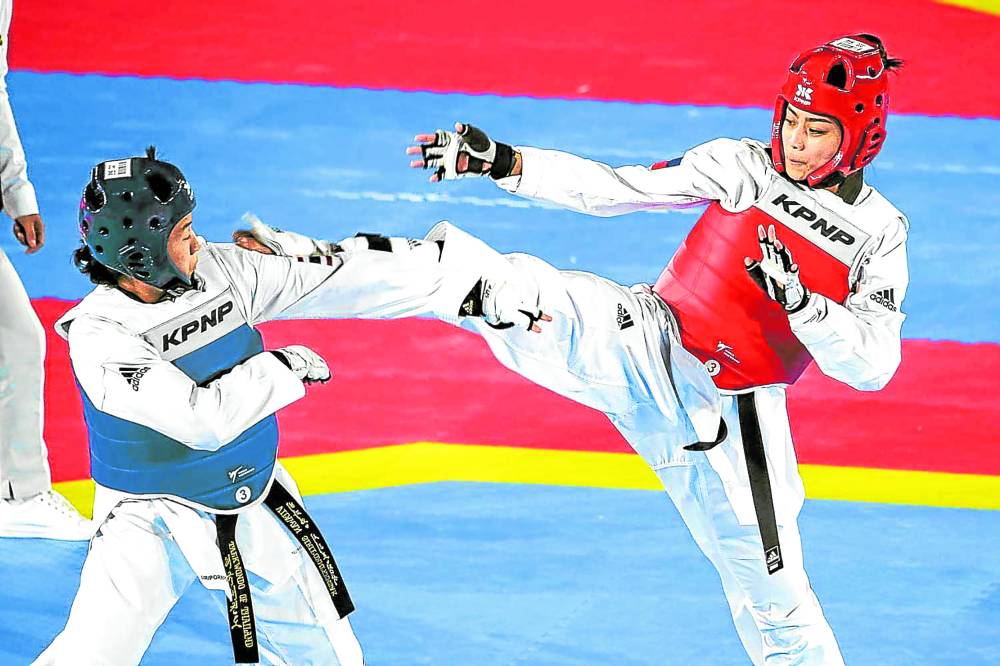
As a parent and a taekwondo practitioner, I couldn’t help but be horrified and disgusted at the latest news about the 17-year-old female yellow belter who was hospitalized after a brutal taekwondo sparring session with a male black belter at her school.
I was also 17 when I began my taekwondo journey at university. I trained thrice a week, at lunchtime, with the club and was so hooked that I would sometimes train with the varsity players in the early morning, too (even if I was never good enough to play at their level).
In all the times I trained with black belts, flyweight or heavyweight, male or female, none of them ever hurt me. Our belts clearly show their superiority, so they have nothing to prove. During training, we also don’t go all out; these sessions are called “study sparring.” It’s controlled hitting, not with full force.
Joining a tournament is a different story—no holds barred then. At a national interschool competition, I had the misfortune of getting matched up with someone from the Philippine Military Academy. I was a red belt (and I later learned she was a brown belt), but we both wore black belts during the match (that was common practice then). I lost and had several bruises, but the referees were around to ensure everything was above board.
Even with helmets, body armor, arm and shin guards, the blocks, kicks and punches still really hurt. At a promotion test, I was kicked in the chest by a large lady jin and got the wind knocked out of me. I couldn’t breathe for several seconds but it felt like forever.
Our school was lucky to have Stephen Fernandez, the 1992 Barcelona Olympics bronze medalist, as our coach. Soft-spoken, ever-smiling and talented, Sir Pen had everyone’s respect. He was patient and encouraging. He didn’t lead with fear or coercion, so we all wanted to do our best for him.
So, given this positive experience with the sport, I had high hopes when I enrolled my son in their school’s grassroots taekwondo program from first to third grade. While his two other coaches were kind, the one assigned to his time slot was glued to his phone and forced the kids to split by pushing their legs wide open to the point of tears. I didn’t get to always watch all of my son’s training sessions, so I asked the other guardians (and the coach as well) if that’s how it was. They confirmed that the kids cry through the pain of being stretched to their limits.
At their own pace
This didn’t sit well with me, so I told the coach not to do it to my son. I felt sorry for the other kids who didn’t have anyone to advocate for them. I don’t think I was babying my son; I just felt that the kids should stretch at their own pace, little by little, and get to say when enough is enough.
They shouldn’t feel forced or voiceless, which is how that poor teen jin felt. In a video interview, she said that she felt afraid to speak up. Her coach and teammates didn’t have her best interests in mind when they didn’t protect her.
Investigations are said to be ongoing, but it’s been over a month since the incident and nothing seems to be happening. Meanwhile, the teen is said to need half a year to recover from her injuries and will be transferring schools. I understand her family’s frustration at the school’s purported lack of action on the matter, but bullies are the ones who should leave. That black belter shouldn’t have beaten her up even if the coach may have allegedly said to do so.
Two decades after I last trained, I resumed my taekwondo practice at ATA Martial Arts Studio, which has adult classes. Since there aren’t a lot of us still kicking into middle age and beyond, our class is sometimes merged with black belt training. They are young and energetic, but respectful and tolerant of all fitness levels and adjust accordingly. Our coaches are patient, focus on character building and are direct with their feedback.
At our recent testing, I earned my brown belt as a 47-year-old with Parkinson’s disease. I performed everything the teenagers did, so I don’t think I was treated differently. During sparring, though, the referee often stepped in to avoid injuries, and it only lasted for a minute. I’m so grateful to return to what I love to do at this point in my life because I realize not everyone gets to enjoy a safe training environment.
Taekwondo is not brawling—it’s an art and a discipline. For gym owners and school coaches, it’s a business. They can’t have repeat customers if negligently injured kids with unhappy parents don’t want to return for more physical or verbal abuse. Bruises and getting hurt are part of the process and fortify one’s resolve but such learning shouldn’t be at the expense of children’s safety and agency. —CONTRIBUTED














































